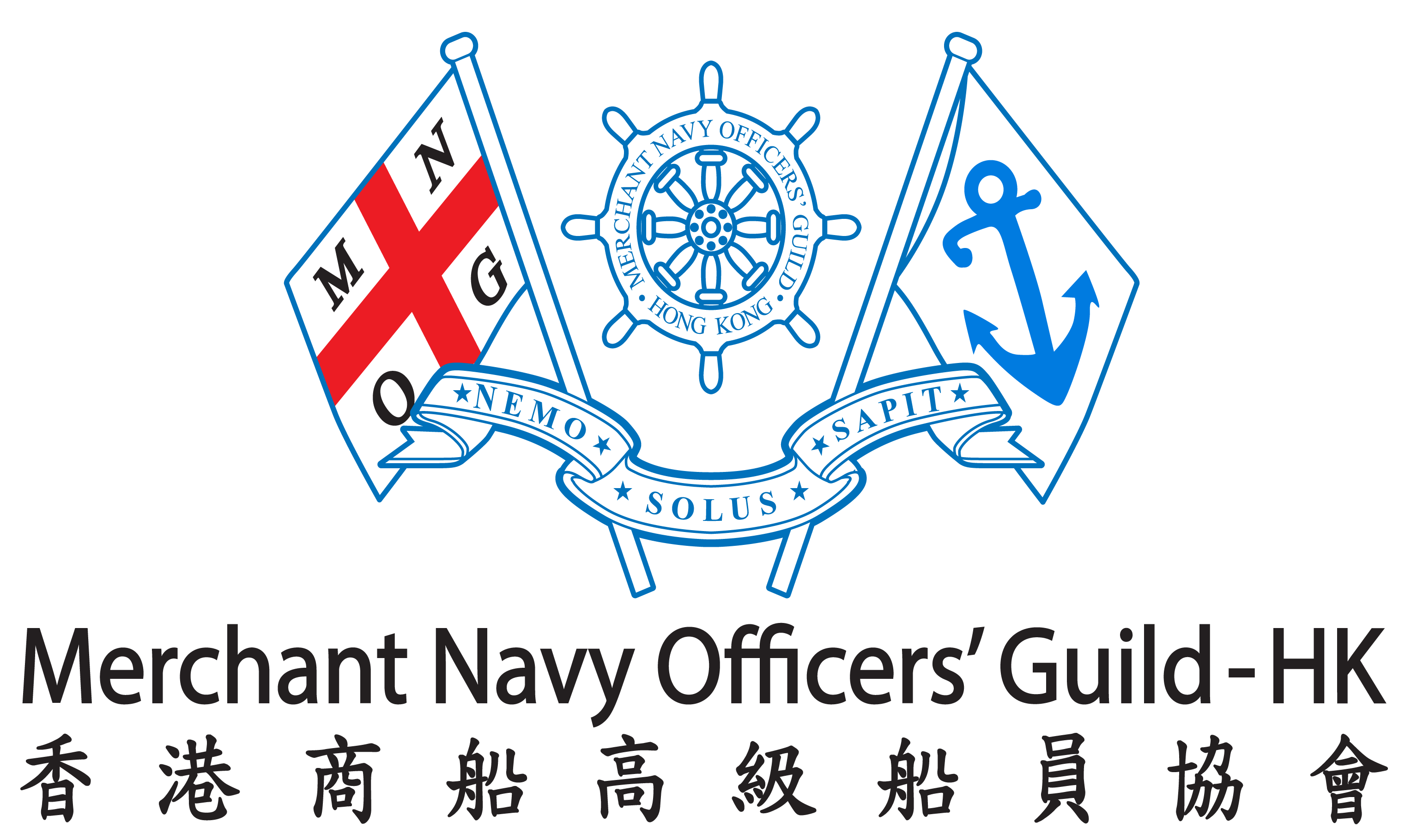History
Guild – Historical Perspective
“Guild” is the early form of “union” which appeared earliest in the 12th century in England. Guild is defined as any of various medieval associations, as of merchants or artisans, organized to maintain standards and to protect the interests of its members. In the 19th century, the word “Guild” was used for voluntary associations of skilled craftsmen and religious associations. For example, the Guild for Masters Marines was established in Shanghai and the Honorable Company of Master Mariners was established in Liverpool.
The word “Guild” means payment and subscription. Members subscribe to the guild, and the money raised is used for providing assistance to the members who are in need. Generally, guild is an organization of persons with related interests and goals, especially one formed for mutual aid or protection, and a voluntary organization which is bounded by rules and membership subscriptions with a common purpose.
The First Mariners’ Club – Shipmaster Association of Shanghai, Shanghai (1874)
In the early 19th century, master mariners based in Shanghai started an informal mariners’ club in the captains’ room of Exchange Hotel. At that time, there were no memberships or subscriptions. In the 1874, Captains’ Club inaugurated in Astor House, Shanghai. It was renamed as the Shipmasters’ Association of Shanghai. It mainly served the masters of coasting vessels for their leisure after work. Accommodation with a single room and a billiard table were arranged in the Temperance Hall.
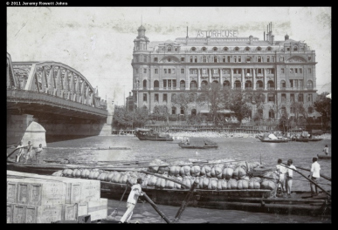
Astor House Hotel, Shanghai
Source: virtualshanghai.net
Mercantile Marine Officers’ Association, Shanghai (1885)
In the late 19th century, the idea of trade unions emerged. Unions originated as associations of skilled workers and formed partly as social clubs and for mutual insurance such as accumulation of funds to cover sickness and funerals. In 1885, Captains’ Club was renamed as the Mercantile Marine Officers’ Association (MMOA) due to increasing membership. MMOA was found to promote social intercourse among certified members in the marine profession. Besides master mariners, all other officers of merchant marine of good standing were accepted in the association. The membership of the association was raised to 230 members. It provided comfortable rooms, facilities for recreation, refreshments and amenities of the club at a moderate monthly subscription. It contained a billiard room, library and reading rooms for members to use.
In 1887, Captain J. Spencer Wilde of Indo-China Steam Navigation Co. was elected as the President of the MMOA. In 1890, MMOA was moved to premises situated in Saunders’ compound, No. 3 Whangpo Road, Shanghai. To meet the rising expenditure in general, there was a monthly subscription of 2.00 for the members. The posts of Manager and Secretary were also created. Mr. G. A. Glenday, a second mate of Indo-China Steam Navigation Co., was appointed as the Manager of MMOA.
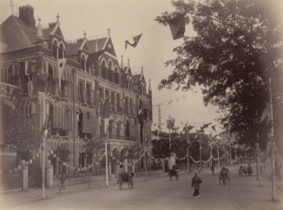
Shanghai in 1887
Source: avezink.livejournal.com
On 26th February 1892, at a meeting of the committee, decision was made to adopt an appropriate flag for the association, and to assume a crest and motto. The flag selected was St. George’s cross, on white background, with letters MMOA in blue in the quarters. The emblem selected was a steering wheel, with letters MMOA close to the spokes. The motto selected was – nemo solus sapit – no one is wise alone.
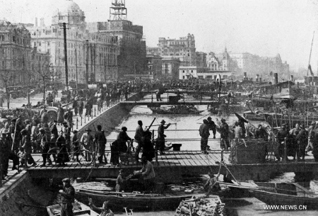
A Port in Shanghai in 1910
Source: news.xinhuanet.com
In 1907, MMOA moved to its own club house on North Soochow Road, Shanghai. In 1912, members were notified that the lease of club premises would expire soon. To deal with the rental crisis, the landlord – Shanghai Land Investment Co. Ltd. allowed the club to stay only if the club agreed to accept certain conditions. One of the conditions was that the rent would remain unchanged for a year, but afterwards there would be a sharp increase of 200.00 per month. Despite how uncertain the situation was, members gave full support to the President and the committee to make decisions.
In 1914, MMOA was renamed as the Merchant Service Club. This title lasted for fourteen years. In 1915, the club was moved to a new building which was especially built for it on Woosung Road, Shanghai. The financial record on 30th September 1916 indicated that no salaries or stipends were paid to either Manager or Secretary for ten years of time.
Mercantile Marine Officers’ Association and Club, Shanghai (1930s)
In 1925 and 1926, the total number of membership was raised up to 214 and 226 respectively. The Club was renamed as Mercantile Marine Officers’ Club in 1928. In 1933, the club was moved to new premises at No. 59 Peking Road, Shanghai. The title was changed again to the Mercantile Marine Officers’ Association and Club (MMOAC) in 1936. In MMOAC, facilities for refreshment and recreation like a billiard room, a library, reading rooms were provided for the use of its members and their guests. Other means of recreation and promotion of social intercourse among the qualified members of the profession were also provided. For the aspect of legal aid, at discretion of the committee, legal brief might be provided to defend a member before a marine court of inquiry. The members’ letters etc., on request, would be dispatched to any port on the coast, under the personal supervision of the Secretary.
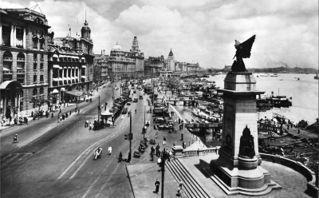
The Bund, Shanghai in 1928
Source: eng.wikipedia.org
MMOAC started as two separate entities with China Coast Officers’ and Engineers’ Guild (CCOG). Both were originally established in Shanghai sometimes in 19th century. In Shanghai, MMOAC and CCOG were separate associations with their own secretariats and premises, but still functioned as associates.
Merchant Navy Officers’ Guild – Hong Kong (1948~ )
Merchant Navy Officers’ Guild – Hong Kong (1948~ )
After the Second World War, the associations resumed their normal operation in Shanghai. Mr. John Watson was the General Secretary of CCOG from 1945 to 1946, and Mr. George Lloyd took over the post from 1946 to 1953. In 1948, CCOG registered as a trade union in Hong Kong, reformed as the name of China Coast Navigating and Engineer Officers’ Guild (CCNEOG). CCNEOG was the forerunner of the present Merchant Navy Officers’ Guild – Hong Kong. CCNEOG occupied a small room in Carmichael and Clarkes Office on 3/F No. 21 Pedder Street, Hong Kong as its office.

Central, Hong Kong in 1950s
Source: gwulo.com
In 1950, the office was moved to 4/F King’s Building, Connaught Road for larger premises. Mr. Percy Nettle was the General Secretary from 1954 to 1963. CCNEOG was moved to 5/F Union Building in 1956. Captain Jack Kay was appointed as the General Secretary since 1963. The office was also moved to Prince’s Building, Hong Kong. During the tenure of Captain Kay, the membership of CCNEOG started to rise, and it was increased up to 300. Of that total 200 were master mariners, navigators and engineers; and the remaining 100 were radio officers.
In 1964, CCNEOG was renamed as the Merchant Navy Officers’ Guild – Hong Kong (MNOG-HK). The yearly Guild subscription was HK$200 for masters, navigators and engineers, and HK$100 for radio officers. In 1966, the Guild was moved to 20/F Union House.
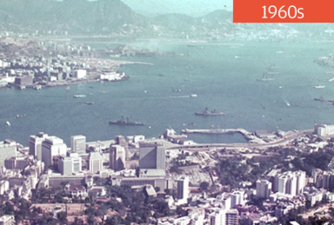
Victoria Habour in the 1960s
Source: multimedia.scmp.com
Mr. Jack Kay was the General Secretary until 1972. Then, Captain John Roe was appointed as the General Secretary from 1972 to 1973. The yearly Guild subscription was fixed at HK$300 for masters, navigators and engineers. For radio officers the yearly subscription was HK$150. During his period of office, the Guild fortunately left the Hong Kong stock market prior to financial crash. Our assets were invested in Euro bonds until the market in Hong Kong had been stabilized. At the time when our assets returned to the Hong Kong stock market, it turned out to be a well shape.
In 1974, Captain G. W. Wilson was appointed to be the General Secretary. However, he served the Guild for only six months due to settlement problem. In 1975, Captain Roy Shorthouse agreed to act as the General Secretary. With strong membership and healthy financial reserves, the Guild Executive Council decided to purchase a permanent property on 11/F Alliance Building, 130-136 Connaught Road Central, Sheung Wan. The Guild office settled down on 11/F Alliance Building on 28th July 1975. From 1975 to 1983, Mr. Alex Griffiths was appointed as the General Secretary.
In 1980, the Guild became the affiliate of International Transport Workers’ Federation (ITF), which functioned to support its member trade unions and to defend the interests of transport workers in the global economy. In general, the main purpose of trade unions was known to act as associations of wage earners or salaried staff, and existed to maintain and improve the conditions of work and rates of pay of their members.
The Merchant Service Club (1984)
In 1983, Captain E. H. Farrow was elected as the General Secretary. He stayed until 1987. During the time of Captain Farrow, the Club was set up. The membership of the Club and the use of it became very popular. Due to popular demand, the Club membership was opened up to Marine Department officials and the shipping community in general, as well as other suitable members.
In 1986, the Guild was then moved to 13/F Alliance Building, while the Merchant Service Club occupied 11/F Alliance Building. In 1987, Captain W. C. Thomson was appointed as the General Secretary. In 1988, Captain P. J. Wu, who was formerly the Assistant Director of Marine, was appointed as the General Secretary of the Guild. He was the first Hong Kong merchant marine officer to hold this post. During the time of Captain Wu, the Guild became more high profile and proactive, and prominent in the affairs of the shipping industry as the industry was expanding rapidly. There was also more cooperation with other Hong Kong based merchant marine seafarers organizations.
From 1990 to 1992, Mr. Hugh Ng Quinn took over the post. He decided to move the Guild office to Room 1401-1402, 14/F Alliance Building, 130-136 Connaught Road Central, Sheung Wan in 1991, where it is now located.
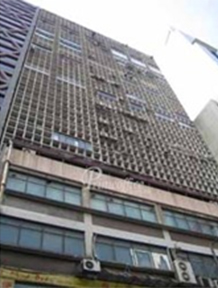
Alliance Building, Sheung Wan
Source: primeoffice.com.hk
In 1992, Miss Yvette Y. L. Chan was appointed as the General Secretary. She stayed until 1995. From 1995 onwards, after the departure of Miss Chan, the office of General Secretary of the Guild became an honorary position. Captain Norman W. Y. Pang volunteered to act as the General Secretary, until he was confirmed as the new General Secretary in the AGM towards the end of June 1996.
ITF Hong Kong Seafarers’ Coordination Committee (1995)
During the time of Captain Pang, the Club was extended with the grant of ITF Seafarers’ Welfare Fund. On 8th December 1995, three Hong Kong seafarers’ unions – MNOG-HK, Hong Kong Seamen’s Union (HKSU) and Amalgamated Unions of Seafarers, Hong Kong (AUSHK) signed the memorandum of understanding with the presence of Mr. Shigeru Wada, the Asia Pacific Regional Secretary of ITF. On 1st April 1996, HKSU became one of the ITF affiliates. On 18th April 1996, ITF Hong Kong Seafarers’ Coordination Committee (ITF HSCC) was formed.
The setting up of ITF HSCC has brought together all the three seafarers’ unions, the Guild, HKSU and AUSHK under one umbrella. The Guild was the coordinator of ITF HSCC, acting as its secretaries and the coordinator of all the Hong Kong unions affiliated with ITF. HSCC worked to coordinate all ITF agreements and ITF related matters concerning seafarers and the shipping industry in Hong Kong. In 1999, Captain T. T. Chung was appointed as the General Secretary, to help Captain Norman W. Y. Pang. Captain T. T. Chung was confirmed as General Secretary in the AGM of June 2000, and continues to serve up to date. By August 2016, the Guild has owned fourteen units in Alliance Building as our assets. The total number of membership of the Guild has reached approximately 26,000.
Hong Kong Seafarer Mutual Assistance Fund (HKSMAF) and Hong Kong Maritime Scholarship Fund (HKMSF) have been officially in operation since 2016. The aims of the Funds are to provide assistance to seafarers in distress and maritime training support to seafarers of Hong Kong registered ships respectively. The Funds are open to eligible applicants and organizations, including seafarers in distress and their dependents, seafarer-related charitable organizations, students studying in Hong Kong maritime institutes, and Hong Kong maritime employers who have contributed to the Trust.
Throughout the continual development of 60 years, the Guild has emerged as stable and harmonious organization of mercantile marine officers. The yearly Guild subscription is HK$500 for all ranks of officers.
MNOG President List (1948 ~ 2027)
| Year | President | Vice President |
| 1948 – 1949 | I. Newton | A. G. Stuart |
| 1949 – 1950 | A. G. Stuart | I. Newton |
| 1950 – 1951 | J. McKinlay | J. W. Fraser |
| 1951 – 1952 | J. W. Fraser | L. H. Williams |
| 1952 – 1953 | L. H. Williams | W. A. Brooks |
| 1953 – 1954 | W. A. Brooks | M. M. Stewart |
| 1954 – 1955 | M. M. Stewart | W. R. Grant |
| 1955 – 1956 | W. R. Grant | W. E. Hargrave |
| 1956 – 1957 | W. E. Hargrave | C. E. Freeman |
| 1957 – 1958 | W. D. Adam | D. O. Conway |
| 1958 – 1959 | D. O. Conway | T. C. W. Marr |
| 1959 – 1960 | T. C. W. Marr | C. E. Freeman |
| 1960 – 1961 | C. E. Freeman | H. Pilling |
| 1961 – 1962 | H. Pilling | W. V. Edley |
| 1962 – 1963 | W. V. Edley | T. J. Owen |
| 1963 – 1964 | T. J. Owen | H. S. Beech |
| 1964 – 1965 | H. S. Beech | St. E. Haslett |
| 1965 – 1966 | St. E. Haslett | J. A. Kent |
| 1966 – 1967 | J. A. Kent | A. L. Marchant |
| 1967 – 1968 | A. L. Marchant | J. Thompson |
| 1968 – 1969 | J. Thompson | R. C. W. Gorman |
| 1969 – 1970 | R. C. W. Gorman | B. A. Barisheff |
| 1970 – 1971 | B. A. Barisheff | W. C. Thomson |
| 1971 – 1972 | W. C. Thomson | F. P. W. Fison |
| 1972 – 1973 | F. P. W. Fison | R. B. C. Lee |
| 1973 – 1974 | R. B. C. Lee | H. A. Griffiths |
| 1974 – 1975 | H. A. Griffiths | R. E. Shorthouse |
| 1975 – 1976 | J. E. Williams | B. P. Sunners |
| 1976 – 1977 | B. P. Sunners | S. Steele |
| 1977 – 1978 | S. Steele | H. J. Myers |
| 1978 – 1979 | H. J. Myers | T. J. McDonough |
| 1979 – 1980 | T. J. McDonough | H. W. Williams |
| 1980 – 1981 | H. W. Williams | J. R. Jones |
| 1981 – 1982 | J. R. Jones | L. C. Young |
| 1982 – 1983 | L. C. Young | J. J. Etherington |
| 1983 – 1984 | J. J. Etherington | A. W. Stevenson |
| 1984 – 1985 | A. W. Stevenson | A. W. Brannan |
| 1985 – 1986 | A. W. Brannan | R. E. A. Soudure |
| 1986 – 1987 | R. E. A. Soudure | Wong Kwok Hung |
| 1987 – 1988 | Wong Kwok Hung | K. S. Srikand |
| 1988 – 1989 | K. S. Srikand | P. W. Ho |
| 1989 – 1990 | P. W. Ho | J. Jorgensen |
| 1990 – 1991 | N. S. Jensen | Ng Mun Loon |
| 1991 – 1992 | Ng Mun Loon | J. Jorgensen |
| 1992 – 1993 | J. Jorgensen | Lui Yan Hong |
| 1993 – 1994 | Lui Yan Hon | Norman Pang |
| 1994 – 1995 | Norman Pang | 1st: Yuen Hoi Che
2nd: Yu Chi Ming |
| 1995 – 1996 | Yuen Hoi Che | 1st: Yu Chi Ming
2nd: Ho Gai Yung |
| 1996 – 1998 | Yu Chi Ming | 1st: Ho Gai Yung
2nd: Tsai Chuck Kin |
| 1998 – 2000 | Ho Gai Yung | 1st: Tsai Chuck Kin
2nd: Michael Marques |
| 2000 – 2002 | Tsai Chuck Kin | 1st: Ho Kai Hung
2nd: Tam Shing Chieh |
| 2002 – 2004 | Ho Kai Hung | 1st: Tam Shing Chieh
2nd: Ng Mun Loon |
| 2004 – 2006 | Ho Kai Hung | 1st: Tam Shing Chieh
2nd: Ng Mun Loon |
| 2006 – 2008 | Ho Kai Hung | 1st: Tam Shing Chieh
2nd: Ng Mun Loon |
| 2008 – 2010 | Ho Kai Hung | 1st: Tam Shing Chieh
2nd: Yu Chi Ming |
| 2010 – 2012 | Ho Kai Hung | 1st: Tam Shing Chieh
2nd: Yu Chi Ming |
| 2012 – 2015 | Ho Kai Hung | 1st: Tam Shing Chieh
2nd: Yu Chi Ming |
| 2015 – 2018 | Ho Kai Hung | 1st: Tam Shing Chieh
2nd: Michael Marques |
| 2018 – 2021 | Tam Shing Chieh | 1st: Wu Kwok Hau
2nd:Cheung Wing Tak |
| 2021 – 2024 | Tam Shing Chieh | 1st: Wu Kwok Hau
2nd: Cheung Wing Tak |
| 2024 – 2027 | Wu Kwok Hau | 1st: Cheung Wing Tak
2nd: Wong Shun Kwan |
